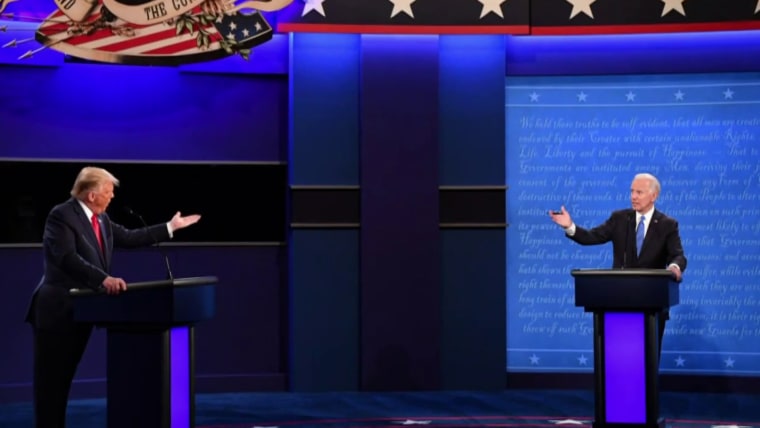Conventional wisdom in modern American politics dictates that Democrats benefit the most from mobilizing voters who are checked out of the political system. But a recent analysis of polling from the last couple of election cycles suggests that the opposite might be true in 2024: It could be former President Donald Trump, not President Joe Biden, who will benefit most from getting disengaged voters to turn out.
Drawing from Siena College / New York Times polling data of primary and midterm voters over the past year, the Times’ chief political analyst Nate Cohn finds that while Biden leads among more regular voters, Trump leads among the rest of the electorate, i.e. more sporadic voters. When you put it all together, it means that if everyone who is registered to vote did vote, Trump would win.
Biden’s central campaign narrative that Trump poses an existential threat to democracy faces some big limitations with this set of voters.
Biden’s camp should take note. Less regular voters are a useful proxy for swing voters, who tend to be less plugged into politics, less ideologically predictable and have less faith in the party system. So even though less regular voters are, by definition, less likely to show up than regular voters at the polls, there are more of them and their preference could still define the outcome of battleground states in which Trump and Biden are competing neck and neck. And with Trump already often outperforming Biden in national polls and swing states, it's crucial that Biden breaks through with this group.
The Times’ analysis breaks down a bunch of different measures for regular voters, including people who voted in the 2024 primaries, the 2022 midterms but not the primaries, people who voted only in the 2020 presidential election, and people who voted in none of those contests. What it finds is that while Biden’s vote share is the largest among people who have voted in the 2024 primaries, his vote share reduces the further back you go — that is, the less engaged the voter is. By contrast, Trump’s vote share stays pretty constant among more regular and less regular voters — and surges among people who have no voting record at all. While Biden has a 5 point lead among the most engaged voters (those who voted in the primaries this year), he trails Trump by 14 points among people who have no voting record. Voters with no recent voting history might sound like they’re not a threat to Biden, but consider that many of them could be young first-time voters.
Less engaged and infrequent voters have some distinct features, Cohn notes:
They’re motivated by pocketbook issues, more desiring of fundamental changes to the political system, and far less concerned about democracy as an issue in the election. Many low-turnout voters — notably including many who consider themselves Democrats — now say they’ll back Mr. Trump.
Given that many swing voters are disengaged voters, it’s vital to pay attention to those preferences.
One takeaway here is that Biden’s central campaign narrative that Trump poses an existential threat to democracy faces some big limitations with this set of voters. Many disengaged voters — who disproportionately get their news from social media, according to the Times — are less likely to see Trump as harboring anti-democratic tendencies or do not find any such tendencies prohibitive. They’re more focused on the economic picture — which generally comes down to issues such as their perception of the prices of goods and services, and the health of the labor market. In particular, it's imperative that Biden makes it clear how he'll help Americans deal with the effects of cumulative inflation during his tenure.

“We find that swing voters are less politically engaged than the average likely voter, and when we ask them which policy actions would make them vote for Joe Biden, left-leaning economic policies, including raises taxes on the wealthy and raising the minimum wage to $15 per hour, rise to the top,” Ryan O’Donnell, deputy executive director at progressive think tank Data for Progress, told me.
“Biden’s economic agenda may not be breaking through to these disengaged voters, but teeing up a fight with Trump on tax fairness is one way to capture their attention on this issue and bring these voters back in,” he added.
If Biden were to trumpet new social programs that help reduce the cost of living, it could also help take the attention off another one of his weaknesses as underscored by the Times’ polling data — voters tend to view him as an agent of the status quo and expect only incremental change from him. Some of this might be due to “vibes” — Biden has been in Washington for decades, and his advanced age is hugely salient to voters. Right now, Trump has a stranglehold on the “sweeping change” energy that often appeals to ideologically uncommitted swing voters — even though the substance of Trump’s policies are largely terrible for working-class people.
In order to win on Election Day, Biden is going to have to both motivate the Democratic base to get fired up and also appeal to disengaged swing voters who often disapprove of both candidates. Right now, it’s safe to say he’s not doing a good enough job with exciting the latter camp.

